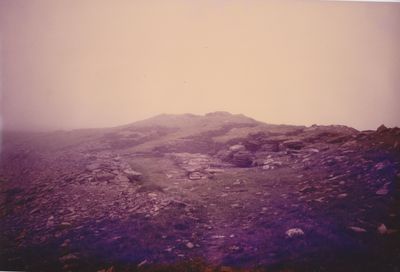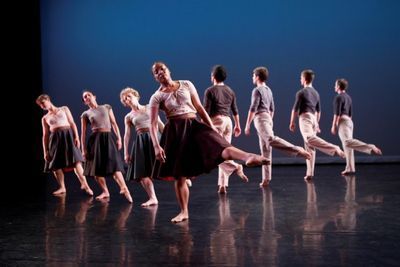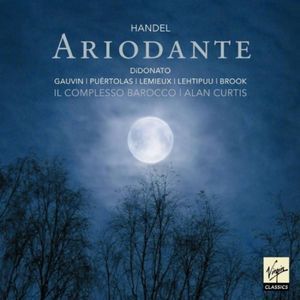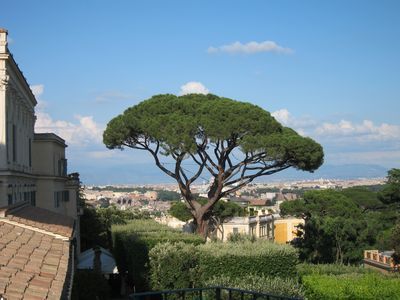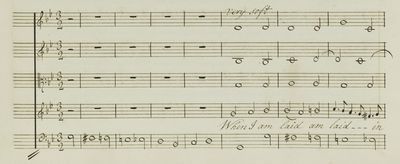Alex Ross's Blog, page 221
August 22, 2011
Random observation
Is it just me, or does the Internet increasingly come across like some bossy high-school brat who's always saying, "Why do you have to be different? Why can't you be like everybody else?" In any case, I did mean to search for Louise Talma, goddamnit.
August 21, 2011
Miscellany: Trend of the Screw, etc
Earlier today the Glyndebourne Festival enchanted and unsettled a worldwide Internet audience with a high-quality video stream of its essentially flawless production of Britten's Turn of the Screw, with Jonathan Kent directing and Jakub Hrůša conducting. How big an audience? It would be interesting to know — for a little while the topic #turnofthescrew was trending worldwide on Twitter, for whatever that's worth. The stream will be archived on the Glyndebourne site until Sept. 12.... Radiohead are getting ready to perform songs from their latest album, The King of Limbs. I can't wait to see them next month.... The pianist Taka Kigawa plays one of his patented hardcore-modern programs at (Le) Poisson Rouge tomorrow night: Boulez's Second Sonata, Saariaho's Ballade, Prelude, and Stockhausen's Klavierstück X... On August 29th, the Vienna Music Film Festival will take over the big outdoor screen in Brooklyn Bridge Park with HD footage of various opera stars in performance, including Jonas Kaufmann singing Lohengrin, Anna Netrebko singing Carmen, and Renée Fleming singing Korngold.... The music of the late Ann Southam is prospering quietly on CD: newly arrived are discs of Glass Houses Revisited, on Centrediscs, with Christina Petrowska Quilico at the piano; and Soundings for a New Piano, from Irritable Hedgehog, with R. Andrew Lee.
August 20, 2011
Tomb of the Eagles
Apropos of nothing, I thought I'd post a picture of the chambered tomb at Isbister, in the Orkney Islands. In 1985, thanks to a travel prize from my high school, I spent the summer wandering around the Highlands and Islands of Scotland, looking at Neolithic tombs and standing stones. The archaeological impulse subsequently deserted me, but I still have piles of pictures and notes from that expedition. For better or worse, my photographic style hasn't changed a great deal in the intervening quarter-century.
Measure for measure
Photo: Richard Termine.
Last night I saw the Mark Morris show at Mostly Mozart: dances on Stravinsky's Renard, Hummel's E-Major Piano Trio, and Satie's Socrate. It's a very rich, in some ways emotionally complete evening, ranging from the fox-in-the-henhouse hijinks of Renard to the philosophical serenity of Socrate. The Hummel piece, Festival Dance, struck me most of all, because it's another uncanny instance of Morris's ability to illuminate abstract instrumental music through gesture and motion. I'm no , but Festival Dance seems ready to join V (the Schumann Piano Quintet) and All Fours (the Bartók Fourth Quartet) in the gallery of classic Morris "music dances." As so many classical types have commented over the years, Morris and his crew tell you as much about the inner life of musical form as any panel of analysts, and they're a lot more fun. You see the contrasts between the principal themes, the contours of phrases, the development of motifs, the interplay of counterpoint, the demarcation of longer paragraphs, the nuances of emotion buried in each modulation or cadence. Best of all was the acting out of folkish rhythms in the finale of the Hummel: I said to myself, "That is what the music is about." I seriously believe that all conservatory students should be required to see Morris's work: they will learn to play more intelligently and more vividly. Georgy Valtchev, Paul Wiancko, and Colin Fowler, the musicians for the Hummel, gave a wonderfully alive performance, dancing on another plane.
August 18, 2011
CD of the week: Ariodante
Joyce DiDonato singing "Scherza infida," with Alan Curtis conducting Il Complesso Barocco; from the complete recording of Handel's Ariodante (Virgin Classics)
Alternate audio player for iPad, iPhone, etc.:
August 17, 2011
Lunch with Furtwängler
During my sojourn at the American Academy in Rome in June — sigh — I stayed in a little building called the Villino, on the grounds of the Villa Aurelia, one side of which can be seen in the photo above. The top-floor apartment is equipped with a somewhat aged but still noble Bösendorfer, and often houses the Academy's visiting composers. John Corigliano and Mark Adamo lived there, as did Olly Wilson and Yehudi Wyner. The three composers who were in residence during my term — Robert Beaser and Rome Prize winners Paul Rudy and Huck Hodge — stayed on or around the main grounds of the Academy, a few minutes' walk from the Villa Aurelia. (Here's a story about Rudy's Rome-inspired pieces.)
The composer and scholar Martin Brody, a past Arts Director at the Academy, told me a bit more about the history of the Villino, and sent along some fascinating excerpts from the diaries of Isabel Roberts, the wife of Laurance Page Roberts, the first director of the Academy in the postwar era. Having read The Rest Is Noise, Marty knew that I would be particularly interested in Roberts's comments on Nicolas Nabokov, the émigré composer turned American government operative, who occupied the downstairs Villino apartment in 1953-54. During that period, Nabokov was organizing La Musica nel XX Secolo, the second of his lavishly funded cultural festivals. The first had taken place in Paris in 1952; both were sponsored by the Congress for Cultural Freedom, for which Nabokov served as Secretary General, and had secret support from the CIA. The 1954 festival featured, among others, Stravinsky, Henze, Nono, Petrassi, Dallapiccola, Maderna, Barber, Copland, Virgil Thomson, and Elliott Carter, whose First String Quartet had considerable impact. In two forthcoming essays on Carter's time in Rome — one in the University of Rochester Press anthology Music and Music Composition at the American Academy in Rome — Brody will sort through the political complexities, ambiguities, and ironies underlying Nabokov's Rome festival.
What caught my eye in the Roberts diaries, though, was a more personal scene, which took place in the Villino on Nov. 14, 1953. It was a lunch for Wilhelm Furtwängler, who was in Rome conducting the Ring at the RAI — a famous recording that has recently been remastered by Pristine Classical. Also present were Jacques Ibert, who was then the director of the French Academy in Rome, and the composer, critic, and Italian cultural functionary Mario Labroca, who was at that time RAI's music director. I reprint this passage with the permission of the Biblioteca Berenson at Villa I Tatti, the Harvard University Center for Italian Renaissance Studies, courtesy of the President and Fellows of Harvard College.
Lunch at the Nabokovs for the Furtwänglers — Nicky cooked it himself … The Iberts and the Labrocas made up the party and I couldn't have enjoyed it more even though I did sit between Nicky and Furtwängler, who talked in German across me for 1 ½ hours! The gestures made me feel I understood most of it although I can't speak one word. He is very simple and easy and so little the accepted picture of the "conductor" that one is immensely charmed.
There was some tense history here; immediately after the end of the war, Nabokov had been working for Information Control, the American cultural-reorientation unit, and had therefore been involved with the early stages of the protracted American investigation of Furtwängler's Nazi-era activities — although he does not seem to have been among the more enthusiastic of Furtwängler's prosecutors. By 1953, the two men had evidently put that past behind them. In any case, the picture of Furtwängler as a "simple and easy" man is striking; not too many people described him in those terms.
August 16, 2011
Lamento Piazzolla
A curious coincidence: I was enjoying a croissant egg sandwich and mug of Stumptown coffee at Linger Café, on Atlantic Avenue in Brooklyn — I'd stopped in to have a look at the new Roulette down the block — when the unmistakable sounds of a descending chromatic bass line filled the air, courtesy of Astor Piazzolla on the PA. I made a mental note to look for a video to post on my blog. When I got to my computer, I found an e-mail from Lev "Ljova" Zhurbin, suggesting that I post a Yo-Yo Ma video of Piazzolla's "Libertango." There are other Piazzolla pieces of the lamento type. Above is a furious live version of his "Michelangelo," live in Brazil in 1985, in which you hear both ascending and descending chromatic patterns. (At 0:30 you almost hear a quotation from the Scherzo of Dvořák's New World.) Ljova has a lovely lamento of his own: "Szeki."
August 14, 2011
Josquin mourns Ockeghem
The Belgian ensemble Vox Luminis sings Josquin's Déploration sur la mort de Jehan Ockeghem.
Construction site
This increasingly tall building on the lower end of Manhattan is the future home of Condé Nast Publications, the New Yorker included, and various other tenants. The classical-music critics are expected to occupy the top ten floors.
I just finished reading Amy Waldman's debut novel, The Submission, which is being published next week by FSG. It tells of an American Muslim architect who wins an anonymous competition to design a World Trade Center memorial, and of the deadly political uproar that ensues. The genuine pain of those directly affected by the attack is woven together with the self-importance, ignorance, and inchoate fear of those who sought to exploit it. In the end, though, you are left with a mesmerizing picture of the mystery of an artist — detached, cryptic, on some level oblivious to the hue and cry, cursed or blessed with that myopic obsessiveness from which great work so often arises. Looking at the construction site yesterday, I saw, in my mind's eye, the garden of Mohammad Khan.
August 13, 2011
Bossa nova, basso lamento
During my recent trip to Brazil, I gave two versions of my lecture "Chacona, Lamento, Walking Blues," which is based on the second chapter of my book Listen to This. (Last year I made a little video explaining the conceit, with the help of Ethan Iverson, Rebecca Ringle, and Tyondai Braxton.) The descending chromatic pattern that anchors the narrative is hardly foreign to the great tradition of Brazilian popular music; in my essay I cite Peter Williams's study The Chromatic Fourth, which includes Tom Jobim's "Corvocado" in the rich lineage of lamento-style patterns, such as Purcell's "When I am laid in earth," above. Here's the famous version of "Corcovado" with Astrud Gilberto, João Gilberto, and Stan Getz:
You can go further back than bossa nova, though. When I gave the talk in Rio, at the Instituto Moreira Salles, I played a bit of Pixinguinha's "Desprezado," recorded 1919-20, with its ragtime-style downward-stepping voices:
As I noted in an earlier post, the IMS has a major online resource related to Pixinguinha, who might be considered the Duke Ellington of Brazilian popular music. It also has an archive of his papers and possessions, which I was able to look at briefly — piles of elegantly notated scores, not to mention his hat, his flute, and, perhaps most importantly, his hip flask. (Last year I tentatively identified Pixinguinha as a co-inventor of the James Bond vamp.)
When I met the guitarist and administrator Arthur Nestrovski in São Paulo — he presently serves as the artistic director of the São Paulo State Symphony — he suggested that Jobim's "Águas de Março" — "Waters of March" — could serve as an even better example for my talk. Indeed, Nestrovski told me he'd once written an essay comparing that legendary song with "When I am laid in earth." Jobim begins with a dominant-seventh chord in third inversion, meaning that the seventh is in the bass. Then the bass note keeps falling by half-steps, in a fabulously seductive motion. Here is Elis Regina:
But everyone I met in Brazil seemed to have a different idea. At Abril Publishing, in São Paulo, I talked to João Gabriel Santana de Lima, editor of Bravo! magazine, who brought up Jobim's "Insensatez." This song is derived from the great chromatic sigh of Chopin's E-minor Prelude:
Thinking of Jobim and Purcell together, I can't help pairing the "Samba on One Note," here played by Baden Powell—
—with the Fantasia upon One Note:
All this music was echoing in my head as I flew home from Rio — departing, of course, from Antônio Carlos Jobim International Airport.
Alex Ross's Blog
- Alex Ross's profile
- 425 followers




